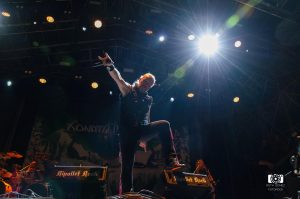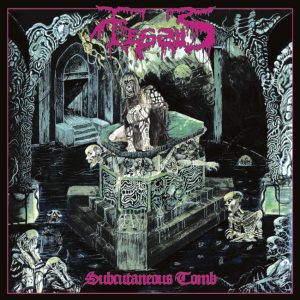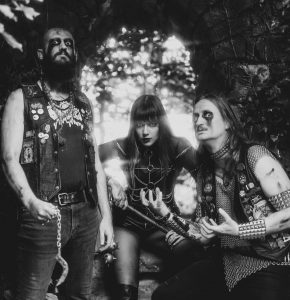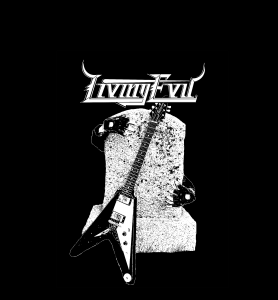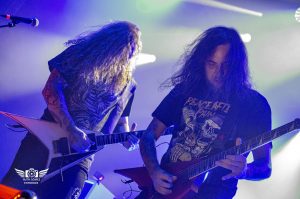Metal: Where Are Our Divas?

Have you ever wondered why metal, that bastion of rebellion, feels so… homogeneous? While the guitars tear through the air and the voices challenge the gods, it seems that the only stories we hear are those of leather-clad, bearded guys with not a hint of color. In a world where diversity is more than just a trendy concept, the metal scene clings to such a monotonous vision that it would make a rainbow blush. It’s high time metal woke up and realized that diversity is the real master riff it’s missing!
An Unequal Stage
The metal scene has built a reputation as a male-dominated space, where the heteropatriarchy feels as comfortable as a freshly bought leather jacket. But not everyone fits into this rigid and often toxic mold. In a world where diversity should be celebrated, instead, the idea that metal is exclusively “for men” is perpetuated. Because of course, who cares if the music is powerful and emotional if it can’t be done in a fur coat and with a 15-string guitar?
Brilliant Examples of Diversity
Fortunately, not everything is lost. There are brave warriors of diversity who are breaking chains and paving the way in the scene. For example:
- Joan Jett: This iconic rocker hasn’t just conquered the rock world; she’s also been a strong voice in the fight for LGBTQ+ rights. With her bold style and defiant attitude, she’s shown that being yourself can be the best riff of all.
- Rob Halford: Known as the “Metal God,” the vocalist of Judas Priest came out in the 90s and became an icon not just of metal but also of the LGBTQ+ community. His stage presence and powerful vocal range have opened many doors for other queer artists in the scene.
- Marcie Free: The vocalist of King Kobra and Signal hasn’t just showcased her exceptional talent; she’s also been a pioneer in challenging gender norms in rock music. Her authenticity has inspired many to live their truth, no matter what others say.
- Kat Shevil: This trans artist from the extreme metal scene is known for her powerful voice and her style that blends genres. Her work is a clear reminder that diversity not only enriches music but is also essential for the evolution of the genre.
Why Is There a Lack of Representation?
The million-dollar question is: why is there so little LGBTQ+ representation in metal? The answer is an explosive cocktail of homophobia, biphobia, and transphobia, shaken with a little ignorance. The reality is that metal has historically been a bastion of machismo, where gender stereotypes and violence are perpetuated, and where being different is synonymous with being an easy target.
Homophobia, in this context, can be as subtle as an axe on a metal stage. From lyrics that denigrate queer people to a fan culture that sometimes seems more interested in maintaining a “tough guy” image than in celebrating diversity. Bands like Impaled Nazarene and The Mentors have made it clear that, for some, fun means ridiculing the LGBTQ+ community. The lyrics of Impaled Nazarene, with their provocative critique of the system and dark humor, spare no expense in mocking queer individuals. And in the case of The Mentors, their lyrics are so riddled with misogyny and homophobia that you can almost hear how a washed-up dinosaur clears its throat. The idea that metal is an exclusive club for men is not just a retrograde notion; it’s a disservice to the music itself.
The Vicious Cycle of Intolerance
Moreover, this cycle of homophobia and transphobia feeds off a broader culture of disdain for what’s different. Why is there so much fear of queer people in heavy music? It might have to do with some people’s need to cling to an outdated view of masculinity, where any hint of sensitivity or vulnerability is perceived as weakness. Because, of course, being a “metaller” means walking around with a stone-faced expression and a seven-string guitar, and not with a colorful feather and well-applied makeup.
How Can We Change This?
Here comes the fun part: changing this narrative is easier than it seems. First, it’s essential to give visibility to LGBTQ+ artists. Music festivals are an excellent place for that! Imagine a festival where each band had at least one queer member; what madness would that be? Diversity would not only enrich the audience’s experience but could also inspire new generations of musicians to be who they really are.
Let’s Talk, Listen, and Learn
Another way to create change is to have sincere and open conversations. Instead of clinging to old stigmas, we need to question what it really means to be part of the metal scene. Is it just about riffs and distortion, or is it also a space for self-expression and freedom? It’s time to come out and bring that pride to the front row!
And of course, it’s crucial to support LGBTQ+ artists who are already in the scene. Buying their music, attending their concerts, and, most importantly, talking about them can create a domino effect. Every little action counts!
Conclusion: Raise Your Voice!
The lack of LGBTQ+ representation in metal isn’t just a music issue; it’s a reflection of a society that still has a long way to go in terms of acceptance and inclusion. Metal music can and should be a refuge for everyone, regardless of their gender identity or sexuality.
So, the next time you listen to your favorite band, remember: behind every powerful riff and every heart-wrenching scream, there’s infinite potential to celebrate diversity. Raise your voice, because the metal scene needs more rainbows and fewer shadows!

